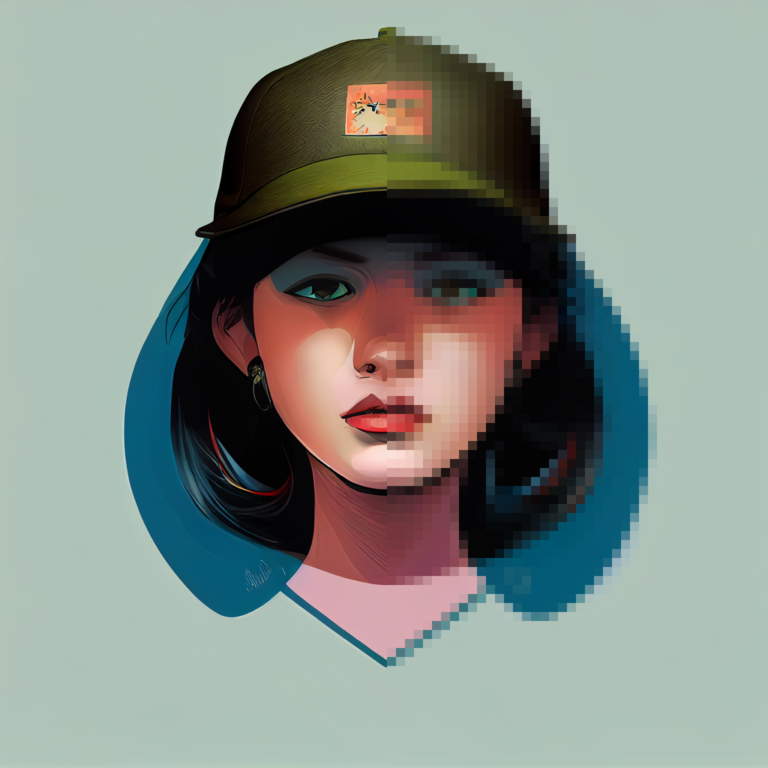What is Vector art?
A graphic design art style that uses mathematical lines, curves, and shapes to create scalable images which do not lose quality at any size. Logos, icons, and other designs that need to be used at various sizes are frequently created using vector art.
What is Raster art?
Raster art is artwork made up of pixels (tiny squares).
Advantages of Vector art
The main advantage of vector art is scalability and its low disk space usage. Any designer or client demands high-quality artwork for great audience engagement on any platform. Vector artwork can be suitable for soda cans, aerosols, t-shirts, Billboards, Airplanes, etc. Logo designs should be created in vector to allow the client or end-user to scale artwork for application on anything, even a football field, maintaining consistency in shape and colour. In addition, vector art does not demand a great amount of storage space on devices compared to raster.
Disadvantages of Vector art
Despite its ability to create images, vector art requires a lot of mastery to create something that mimics a raster image. Since vector uses complex mathematical curves and lines, the process becomes more complex when different layers are stacked to produce a photographic result. Vector shapes are controlled and kept in position by handles called nodes. These nodes can be difficult to move or adjust when stacked. In addition, stacking complex vector layers can result in numerous computer crashes or slow computer performance, as the process may demand a lot of RAM.
Advantages of Raster art
The main advantage raster art has over vector art is image manipulation capabilities. While vector applications like Adobe Illustrator have started incorporating some raster effects natively, raster applications still possess the ability to quickly apply various treatments such as brushes and mixed effect tone adjustments. Shapes and edges can be effortlessly constructed, erased, adjusted, or blended.
Disadvantages of Raster art
Disk space storage and image computing power consumption are one of the greatest drawbacks. Because raster makes use of pixels, to create and export high-quality artwork, the designer or artist has to work on a high-resolution canvas. Meaning huge file dimensions have to be incorporated to achieve pleasing results. Proportionally, huge canvases yield huge files which will take up storage space and will also make sharing files difficult if one is using a slow internet connection. Saving and exporting the artwork during and after creation can be demanding on your computer processor. Another con is, raster art is not suitable for tasks that require precision. Under magnification, edges may not line up ‘tightly’ due to anti-aliasing. This challenge makes raster highly unsuitable for logo design in my opinion.
Below is a list of some popular applications in no particular order.
| NAME | FILE EXT. | TYPE | INVESTMENT | URL |
| Adobe Illustrator | .ai | Vector | Paid | https://www.adobe.com/products/illustrator.html |
| Adobe Photoshop | .psd | Raster | Paid | https://www.adobe.com/products/photoshop.html |
| Affinity Designer | .afdesign | Vector | Paid | https://affinity.serif.com/en-us/ |
| Affinity Photo | .afphoto | Raster | Paid | https://affinity.serif.com/en-us/ |
| Corel Draw | .cdr | Vector | Paid | https://www.coreldraw.com/en/ |
| Corel Photo-Paint | .cpt | Raster | Paid | https://www.coreldraw.com/en/pages/photo-paint/ |
| Inkscape | .svg | Vector | Free | https://inkscape.org/ |
| Gimp | .xcf | Raster | Free | https://www.gimp.org/ |
| Procreate | .procreate | Raster | Paid | https://procreate.art/ |
Vector vs Raster – The Verdict
The verdict is, neither vector nor raster is better than the other. This is because of interdependence. A designer is likely to use both vector and raster to achieve a desired aesthetic. This results in a merging of applications. I work across Adobe Illustrator and Photoshop seamlessly but make most of my edits in Illustrator. As mentioned earlier vector applications such as Adobe Illustrator are adding raster effects and functionality, and vice-versa raster applications like Photoshop are adding vector capabilities. In the future, we might see developers merge their raster and vector applications completely to allow for a one-solution design package. Additionally, tech analysts predict an affordable future of cloud storage and hosted computer processing. This advancement will eliminate many of the disadvantages attributed to computer processing and disk storage. Also, with advancements in Artificial Intelligence many drawing and editing tasks will be handled swiftly and easily using algorithm-based systems.

